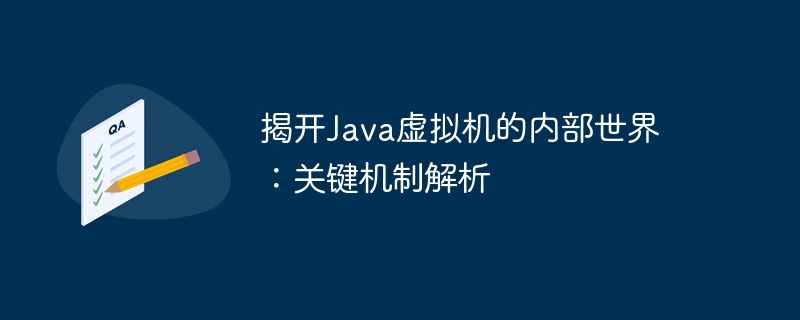
JVM key mechanism analysis: Class loading: Follow class.forName() to load class files. Instantiation and garbage collection: Use new to create objects, and the JVM manages their life cycle. JIT compilation: Improve performance. Steps include enabling diagnostic options and printing compilation information. Practical case: analyze memory leaks and use the jmap tool to generate stack information. Garbage collection algorithm: Common algorithms include SerialGC and ParallelGC, which can be tuned by adjusting parameters.

Uncovering the inner world of the Java virtual machine: Analysis of key mechanisms
Introduction
Java Virtual Machine (JVM) is the core engine for running Java programs. Understanding the internals of the JVM is critical to optimizing application performance and troubleshooting. This article will delve into the key mechanisms of the JVM and illustrate it through practical cases.
Class loading mechanism
The class loading mechanism is responsible for loading compiled Java class files into the JVM. It follows the following steps:
class.forName("com.example.MyClass");Instantiation and Garbage Collection
When a class is loaded, instances of its objects can be created. The JVM manages object lifecycle using the following methods:
MyClass myObj = new MyClass();
JIT Compilation
A just-in-time (JIT) compiler converts bytecode into machine code for improved performance at runtime performance. It uses the following steps:
-XX:+UnlockDiagnosticVMOptions -XX:+PrintCompilation
Practical case: Memory leak analysis
Memory leaks are a common performance problem in JVM. We can use the following tools to analyze it:
jmap -histo:live [pid]
Garbage Collection Algorithm
JVM uses a variety of garbage collection algorithms to recycle objects that are no longer used. One of the most popular algorithms is:
-XX:+UseSerialGC -XX:+UseParallelGC
Practical case: Garbage collection tuning
You can optimize its performance by adjusting garbage collection parameters:
-Xms1024m -Xmx2048m -XX:+UseConcMarkSweepGC
Other mechanisms
The JVM has many other important mechanisms, including:
Conclusion
Understanding the internal mechanisms of the JVM is crucial for Java programmers. By understanding these key mechanisms, we can optimize performance, troubleshoot problems, and write more reliable applications.
The above is the detailed content of Uncovering the inner world of the Java virtual machine: analysis of key mechanisms. For more information, please follow other related articles on the PHP Chinese website!




